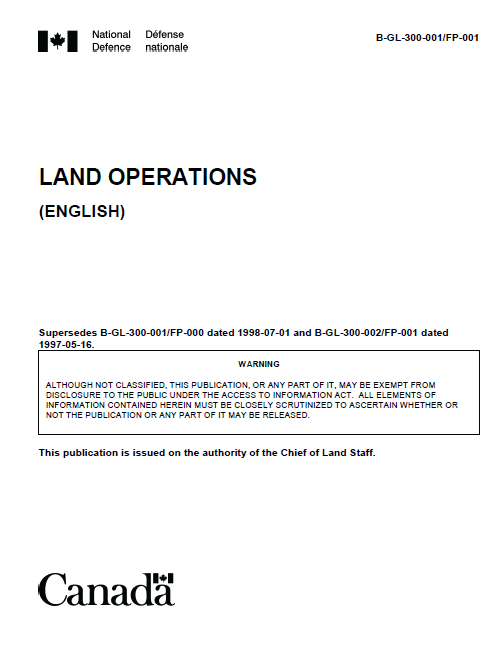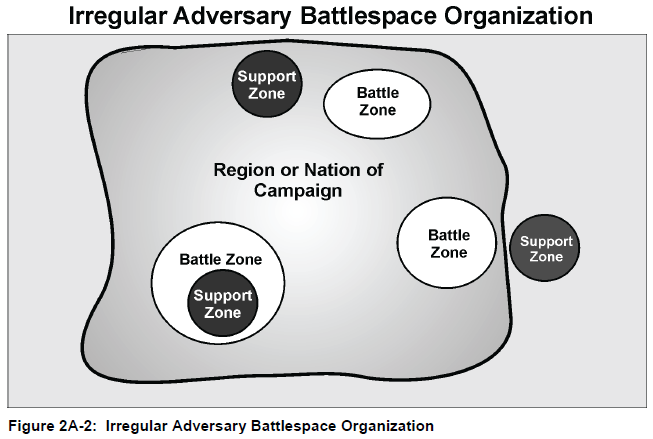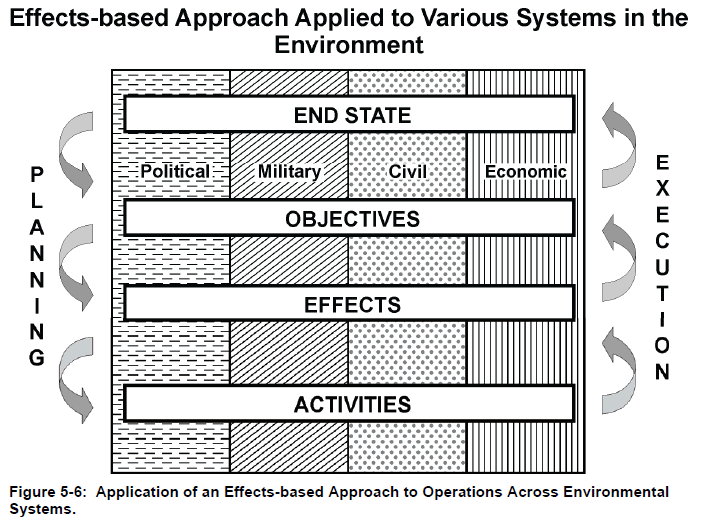 B-GL-300-001/FP-001
B-GL-300-001/FP-001
- 457 pages
- ALTHOUGH NOT CLASSIFIED, THIS PUBLICATION, OR ANY PART OF IT, MAY BE EXEMPT FROM DISCLOSURE TO THE PUBLIC UNDER THE ACCESS TO INFORMATION ACT. ALL ELEMENTS OF INFORMATION CONTAINED HEREIN MUST BE CLOSELY SCRUTINIZED TO ASCERTAIN WHETHER OR NOT THE PUBLICATION OR ANY PART OF IT MAY BE RELEASED.
- January 1, 2008
AIM
1. The purpose of this publication is to present capstone doctrine for the conduct of land
operations. It combines and supersedes two former publications, Conduct of Land Operation— Operational Level Doctrine for the Canadian Army (B-GL-300-001/FP-000) and Land Force Tactical Doctrine (B-GL-300-002/FP-000). This combination reflects the intrinsic link between activities and effects across these two levels of command.APPLICABILITY
1. This publication is applicable at the operational and tactical levels and relevant to
strategic level planners and commanders.SCOPE
1. This publication is written to be in line with and to reflect the long-standing, proven and
extant philosophies and principles for the creation and application of a military force’s fighting
power. It describes the Canadian approach to operations.2. The doctrine within publication recognizes that in order to reach enduring operational
and strategic end states, the root causes of a conflict must be addressed in light of the given
environment and its influencing elements and systems. To this end, land forces do not simply
undertake physical activities and effects against adversarial forces. Land forces apply their
capabilities to complete a combination of physical activities and influence activities that create
effects on the physical and psychological planes. In doing so, a wide range of targets is
engaged. This range will certainly include adversaries, but also other groups, systems, and
individuals within the battlespace and environment that play a role in reaching the operational
and campaign objectives and end states. In this comprehensive application of combat power
the military does not act alone, for many enduring solutions to a conflict requires the support of
other agencies and elements of power. Thus, this publication does not view military operations
in isolation, but places them in the context of a joint, inter-agency, multinational, and public
framework.3. Although the publication introduces some new terminology and expands upon certain
concepts, the roles, missions, and tasks in which Land Force units have traditionally participated
have not changed. The doctrinal concepts are not necessarily new, but they only articulated in
more detail.…
…
314. FULL-SPECTRUM OPERATIONS: LAND TACTICAL OPERATIONS OF OFFENSIVE,
DEFENSIVE, STABILITY, AND ENABLING1. Campaigns and operations are prosecuted through the conduct of tactical operations29
and activities. Land forces will undertake a wide range of tactical level activities in the
prosecution of an assigned operation and the overarching campaign. They may be
simultaneous or sequential depending upon the level of command. For example, a unit may be
conducting an attack in one location, defending a vital point in another location, and securing a
local populace and giving emergency aid in a third location.…


